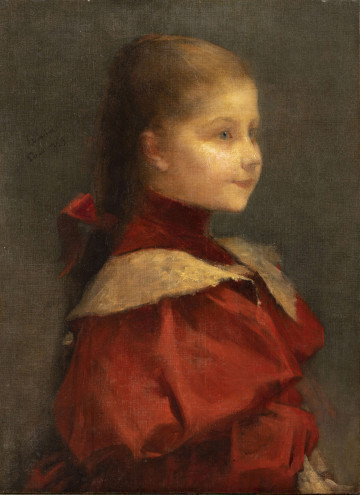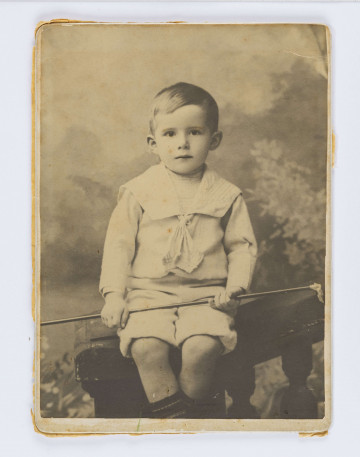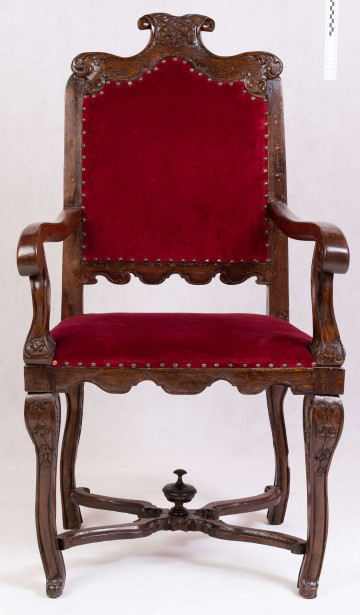
Little girl in a red dress
1893
National Museum in Lublin
Part of the collection: European painting
In the 17th century, the inhabitants of the Netherlands, seized by a passion for gardening, brought rare species of flowers of great value into their gardens and were also keen to see them painted. In Antwerp, around 1600, a new type of painting was created with the motif of a garland or wreath of flowers and fruit with an illusory relief, portrait or symbolic motif in the central part. This type of composition won special recognition among connoisseurs and collectors. The symbolic speech of flowers contained in the paintings had a variety of messages. Jan Philip van Thielen, a Flemish painter of the Baroque period and Daniel Seghers' disciple, masterfully represented this type of composition. He collaborated with the painter of figural scenes Erasmus Quellinus the Younger, to whom he was related.
The Portrait of a Girl in a Garland of Flowers from the Lublin collection is most probably the result of the joint work of those two artists. There is no doubt about van Thielen's authorship since the author's signature has been preserved on the face at the bottom of the painting. Over the years, the artist changed the way he signed his works, which enabled establishing the painting's creation as 1650-1660. The composition of the portrait is free. Strong chiaroscuro builds the form. The artist emphasised the natural beauty and grace of a few-years-old child. These features of the painting would indicate the hand of Quellinus the Younger.
The girl is slightly leaning out of the dark space, with the painted outline of a carved stone cartouche-gate, her antic dress, unnatural solemnity, and the symbolism of briefly blooming, multi-coloured flowers surrounding her indicate that this is a portrait of the deceased. The transience and shortness of life are symbolised by flowers depicted with great precision and botanical accuracy. The artist selected plants for their beauty, originality, exoticism and symbolic meaning. The flower species depicted by van Thielen bloom from spring to autumn, i.e., at different times. Only the paradisiacal land can be the place where they meet out of time. In the background of the flower garlands, ivy is depicted with its stems surrounding the figure. The evergreen plant symbolises faith in eternal life, and its persistence symbolises the enduring, heartfelt remembrance of loved ones of a prematurely deceased child.
Magdalena Norkowska
Author / creator
Dimensions
cały obiekt: height: 85 cm, width: 118 cm
Object type
painting
Technique
oil technique
Material
canvas, oil-based paint
Creation time / dating
Creation / finding place
Owner
The National Museum in Lublin
Identification number
Location / status

1893
National Museum in Lublin

1905
National Museum in Lublin

late 18th century
National Museum in Lublin
DISCOVER this TOPIC
Castle Museum in Łańcut
DISCOVER this PATH
Educational path